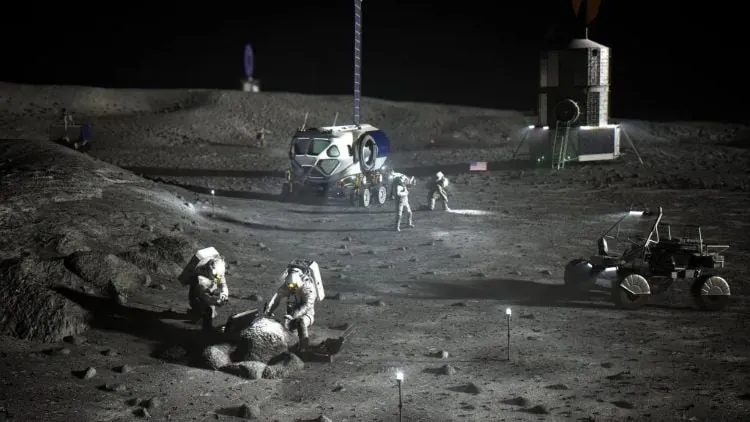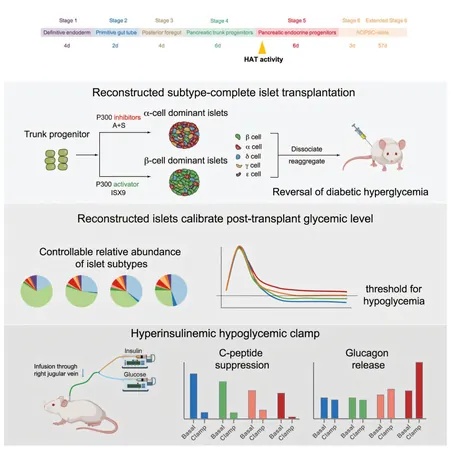
Revolutionizing Lunar Habitats: The Power of Thermoelectric Generators
2025-08-24
Author: John Tan
Harnessing the Moon's Extremes for Power Generation
Could thermoelectric generators (TEGs) be the key to sustainable lunar habitats? A groundbreaking study from researchers in the Republic of Korea, published in Acta Astronautica, delves into this very question. The team has explored a revolutionary method to enhance power efficiency and reliability, crucial for surviving the Moon’s extreme conditions.
The Challenge of Lunar Temperatures
This study marks the first analysis of how a cutting-edge TEG system might operate on the lunar surface, especially given the extreme temperature fluctuations—from a scorching 121°C (250°F) during the lunar day to a chilling -133°C (-208°F) at night. Past research suggests that such drastic temperature variations could significantly boost TEG efficiency, making what’s known as transient-state operation possible.
Innovative Heat Storage Solutions
The researchers aimed to evaluate multiple heat storage (HS) systems to potentially achieve this transient-state operation under lunar conditions. Their findings were promising: they discovered that implementing these advanced HS systems could lead to an impressive 48.9% increase in power generation. This indicates that the Moon's wide temperature range might not only benefit power generation but also support long-term human habitats.
Paving the Way for Deep Space Exploration
The researchers highlight that global interest in deep space exploration is growing, particularly in establishing human bases on the Moon and Mars. As emphasized by scientists involved in the Artemis project, a sustainable lunar base is essential for future solar system missions. Thus, generating adequate power for such outposts lies at the heart of this research.
Evaluating Power Options
While the study considers alternative power sources like Radioisotope Thermoelectric Generators (RTGs), it also points out their limitations for long-term missions due to the decay of radioactive isotopes. However, RTGs have powered lunar instruments from the Apollo missions and are currently utilized by NASA’s Curiosity and Perseverance rovers on Mars.
NASA's Future Missions and Technological Advances
Looking ahead, NASA plans to deploy RTGs in the upcoming Dragonfly mission, scheduled for July 2028. The study briefly discusses the potential of solar and nuclear power on the Moon, with fission reactors previously proposed as viable options.
Aiming for a Long-Term Human Presence
As part of its Artemis program, NASA is focused on establishing a sustainable human presence on the Moon. This study is particularly relevant as it aims to create technologies not only for lunar missions but also for eventual crewed missions to Mars, as set out in NASA’s Moon to Mars Architecture.
In Situ Resource Utilization: The Future of Lunar Power
Reliably harnessing power on the lunar surface will reduce the need to transport resources from Earth, promoting in situ resource utilization (ISRU). In this context, TEGs are positioned to take advantage of the Moon’s temperature extremes to meet power demands.
The Road Ahead
As humanity advances toward establishing long-term bases beyond our planet, studies like this reveal an exciting trend—using terrestrial technologies to enhance life in space. With TEGs potentially serving as a foundation for powering lunar habitats, the future of lunar exploration looks bright.
Will thermoelectric power generation play a crucial role in advancing lunar habitats in the years to come? Only time will tell, and the journey of scientific inquiry continues!






 Brasil (PT)
Brasil (PT)
 Canada (EN)
Canada (EN)
 Chile (ES)
Chile (ES)
 Česko (CS)
Česko (CS)
 대한민국 (KO)
대한민국 (KO)
 España (ES)
España (ES)
 France (FR)
France (FR)
 Hong Kong (EN)
Hong Kong (EN)
 Italia (IT)
Italia (IT)
 日本 (JA)
日本 (JA)
 Magyarország (HU)
Magyarország (HU)
 Norge (NO)
Norge (NO)
 Polska (PL)
Polska (PL)
 Schweiz (DE)
Schweiz (DE)
 Singapore (EN)
Singapore (EN)
 Sverige (SV)
Sverige (SV)
 Suomi (FI)
Suomi (FI)
 Türkiye (TR)
Türkiye (TR)
 الإمارات العربية المتحدة (AR)
الإمارات العربية المتحدة (AR)